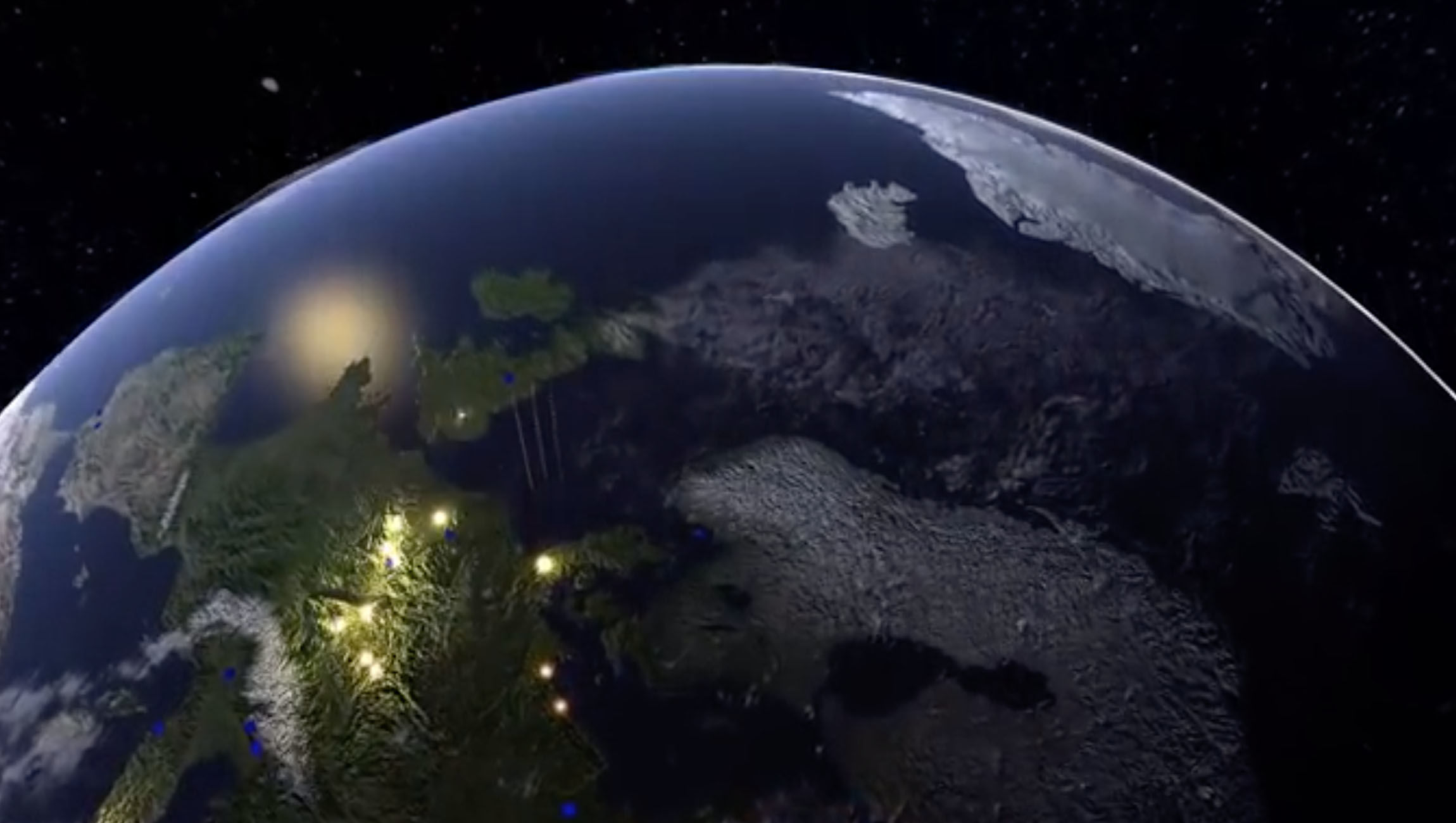Create a free profile to get unlimited access to exclusive videos, sweepstakes, and more!
Nuclear War Simulator reveals the dystopia we’ll be living in if nuclear war breaks out

Nuclear war is nothing new in video games that splatter graphic images of a barren dystopia on your screen, but Nuclear War Simulator is not a game.
NWS was developed by Ivan Stepanov as a mod to the nightmarish video game Defcon, which lets you command a global superpower in the heat of nuclear war. The problem was that Stepanov didn’t have enough freedom with the simulator as just a mod. Wanting to create a program that would show the real humanitarian consequences of global nuclear attacks, Stepanov upgraded NWS from a mod to a standalone simulator that should be available in 2020. Its accuracy in predicting destruction levels is downright scary.
“This software should help you answer the question: what will happen if Russia and the United States or India and Pakistan use their arsenals?” Stepanov said on his website, adding that “By simulating the most relevant of [war] systems, you should be able to tell a credible story about how nuclear conflicts play out and what are the consequences.”
The simulator is highly complex and includes every system and process that would be involved in a bona fide conflict. You take charge of systems such as command and control, locations and movement, and weapons delivery by making decisions such as where to hide arsenals or detonate a nuclear warhead. It isn’t as simple as just blowing things up. The colored areas representing casualties, pressure overkill, radiation levels, and fallout in the video prove that NWS has one central purpose: to reveal the disturbing aftermath of nuclear war.
In 1986, a commercial nuclear power plant in Chernobyl, Ukraine, exploded from a fatal cocktail of human error and outdated design flaws. Thirty-one people either lost their lives from the initial explosion, they succumbed to severe burns, cardiac arrest, or the effects of radiation exposure.
They weren’t the only victims. The accident unleashed enough radioactive iodine to cause different forms of cancer, fertility issues, congenital malformations in children born to those affected, cataracts, and psychological trauma that often led to addiction and even suicide.
Chernobyl has become a test lab forecasting what could happen if another immense explosion or act of nuclear terrorism befalls us. Most of the animals still living and breeding there have and continue to pass on gene mutations. If something radioactive eats something else radioactive ... you get where this is going.
Now really think about this. Chernobyl wasn’t even a war zone.
Hiroshima was the target of a uranium bomb that exploded with the power of 15,000 tons of TNT, and that isn’t even the worst of it. It racked up 140,000 known casualties by 1945, not counting those who had to live out the rest of their lives with chronic illness from radiation poisoning. Many were ravaged by cancer. The really unnerving part is that the bomb that devastated Hiroshima was only a fraction as powerful as the Chernobyl explosion, and Chernobyl was an accident.
Could humans go extinct if we get nuked severely enough? The 13,000 nuclear weapons known to exist, 9,000 of which are lurking in military stockpiles, could inflict far more serious damage than the explosions at Chernobyl and Fukushima and the attack at Hiroshima. If none of our species have migrated to other planets and moons in the event of all-out nuclear war, possibly. The sterility in animals that endures decades later doesn’t make much of a case for Homo sapiens thriving in the ruins of a warhead strike.
Taking the results of a NWS simulation and applying real-world biological and humanitarian effects reveals what kind of apocalyptic destruction Earth would be in for.
Nuclear winter is one such aftereffect that keeps on killing long after the fires have died down. The opposite of the greenhouse effect, a nuclear winter happens when so much ash and smoke gets into the atmosphere that sunlight is unable to penetrate. Without a source of heat, temperatures plummet, and plants are incapable of photosynthesis. Anything that depends on plants for survival will end up dying off, and from there, the effects creep higher and higher in the food chain. Many scientists believe there was a similar effect from the asteroid that ultimately extinguished the dinosaurs.
This is why we need technology like NWS. Though Stepanov is still editing the software to thoroughly figure out the duration of a possible nuclear winter and account for other calculations and consequences, it should still be released early next year. More advanced versions could surface in the future as he receives feedback. To take a stand against nuclear war, support ICAN and IPPNW.
Ivan Stepanov, you are doing sacred work.
(via Nuclear War Simulator)


























